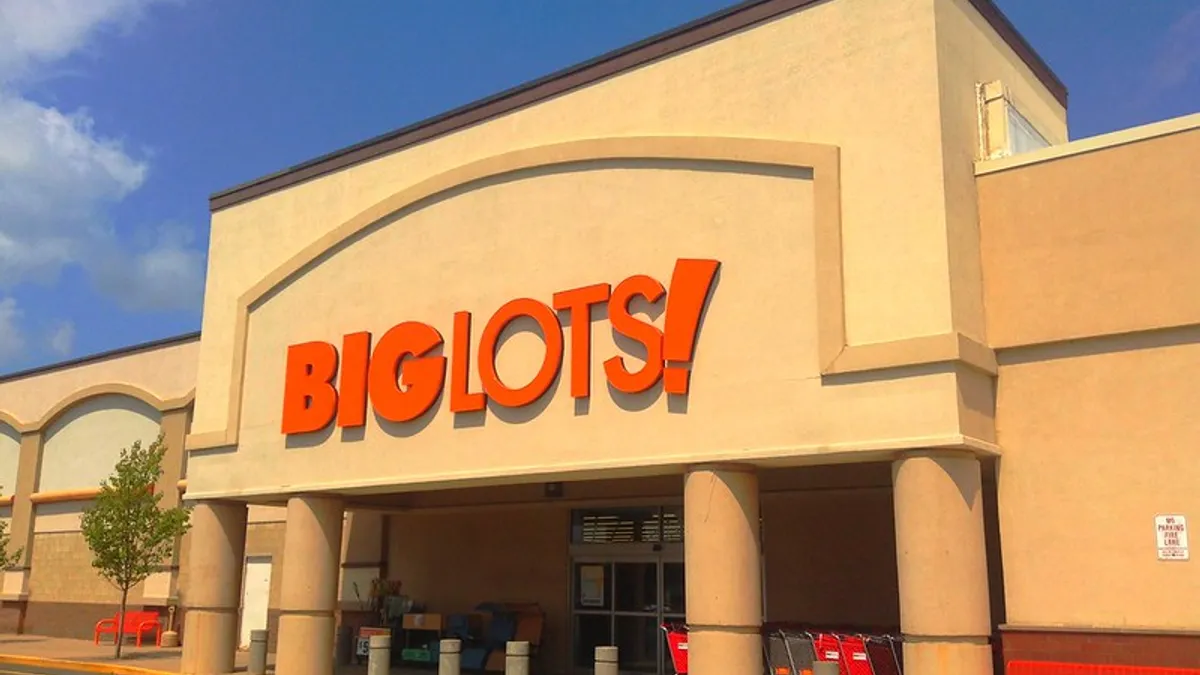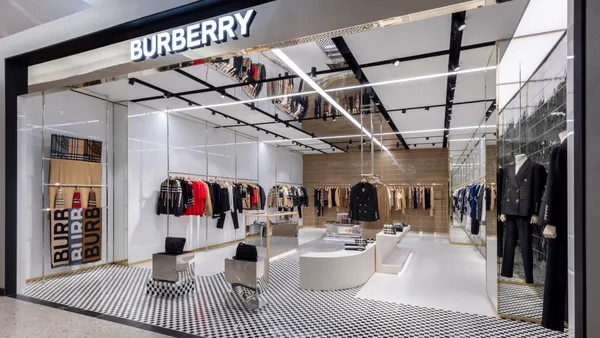Dive Brief:
- Big Lots’ core customers remained under economic pressure in Q2 with “limited capacity for higher-ticket discretionary purchases,” CEO Bruce Thorn said in a Tuesday earnings announcement and call. The retailer’s net loss widened to $249.8 million from $84.2 million last year.
- Net sales in the second quarter totaled $1.14 billion, a 15.4% decrease versus $1.35 billion last year. Comparable sales for the quarter fell 14.6%. The company ended Q2 with $983 million in inventory versus $1.16 billion last year and about $493 million in long-term debt; the company reported $253 million in debt last year.
- Big Lots completed the sale and lease back of 22 owned stores and a distribution center in Apple Valley, California, on Friday. The transaction delivered net proceeds of $294 million. The company says it used $101 million of the proceeds to pay off its lease on the distribution center and the remainder to pay down long-term debt.
Dive Insight:
Big Lots had a self-described "disappointing" first quarter. However, in Q2, the company's performance was ahead of guidance but "still nowhere near where we want it to be in terms of driving growth and profitability," Thorn said. And for the past 18 months, Thorn said, Big Lots has had to play defense “as the consumer environment quickly and sharply deteriorated.”
In addition, Thorn said inflation disproportionately affected the company’s lower-income customers who have pulled back spending on discretionary purchases, especially in high-ticket home and seasonal categories. “While the consumer environment will likely remain challenging and result in negative comp sales in the back half of the year, we are now in a position to get back to playing offense,” Thorn said.
Partly in response, Big Lots has flexed its assortment by increasing its food and consumables inventory, which is currently an in-demand category in retail. As part of its consumables category reset, Thorn said the company introduced Big Lots-branded baby products like diapers and wipes in stores this month.
Seasonal comps fell 26% last quarter driven by consumer reticence to spend on higher-ticket merchandise like outdoor furniture. Because seasonal items are one of the company’s highest margin categories, “the significant promotional activity required to successfully right-size our seasonal inventory unfavorably impacted our overall gross margin,” Thorn said.
But in Q3, the company’s assortment shifts from high-ticket outdoor furniture to lower-ticket decorative items. Thorn said customers are less hesitant to spend in that category and Halloween seasonal sales are off to a strong start.
”Importantly, our efforts to clear slow-moving inventory were successful and leave us well positioned with inventory coming into Q3,” Chief Financial Officer Jonathan Ramdsden said during an earnings call.
Thorn said Big Lots is taking five actions to improve its position in light of the economic environment. They are owning bargains, communicating unmistakable value, increasing store relevance, winning with omnichannel and driving productivity.
Big Lots also wants to achieve $100 million in SG&A savings in 2023. In addition, Thorn said the company has identified a path to save an additional $200 million from the bottom line across gross margin and SG&A through a partnership with an external firm. The initiative, Project Springboard, is expected to deliver a high proportion of benefits on a run-rate basis by the end of 2024.
In response to an analyst’s question for more details on the initiative, Ramsden said the project is still in the early stages. But it includes an SG&A component, benefits anticipated from optimizing pricing and promotions and cost of goods reductions. Ramsden said they anticipate sharing more about the specific projects the company has committed to in order to reach its stated $200 million goal by late fiscal 2024.
Ramsden also said the leaseback deal further strengthened the company’s liquidity. He said two additional leasebacks of company stores are set to close pending due diligence. That deal is expected to yield additional proceeds of $9 million.
Big Lots' guidance for the rest of the year anticipates Q3 comps to be down in the low teen range with modest improvement relative to Q2. For the fourth quarter, the company anticipates improved comp sales relative to Q3 in the high single-digit negative range as the company continues actions to improve the business.















